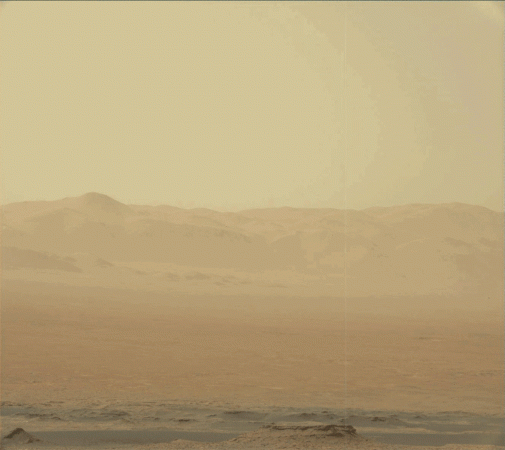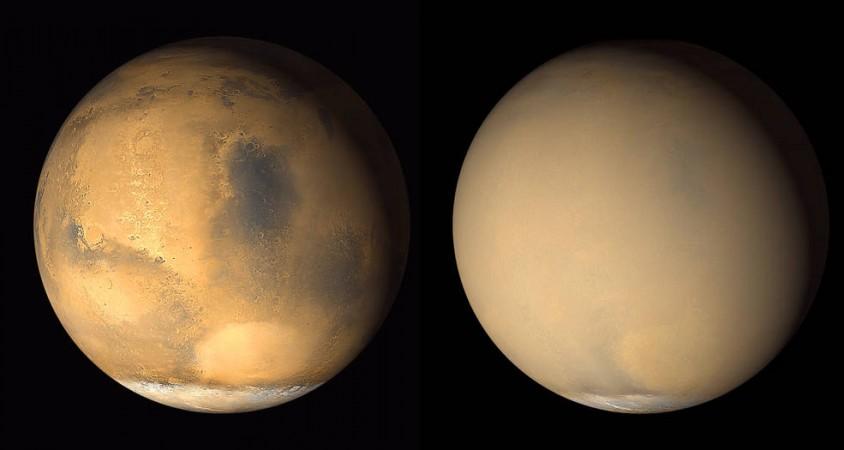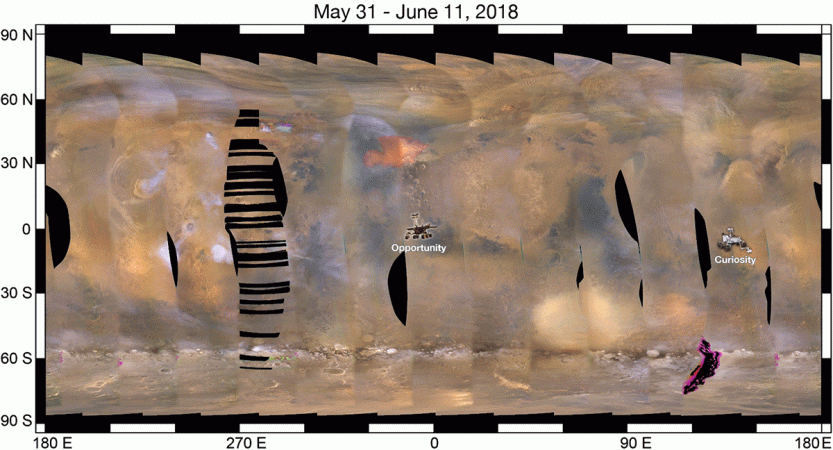
The entire planet of Mars is going through a massive sandstorm that has been raging for weeks now. The Opportunity rover is caught right in the middle of the storm, is not receiving enough sunlight and has been put to a low power sleep mode. It might never wake up again, but scientists are saying there are chances it would actually weather this storm. The rest of the Mars instruments, including Curiosity rover, are up and running, making for an up close and personal look at Martian weather.
There are currently a number of missions running instruments both on and in the vicinity of the red planet that are in the perfect place and time to study Mars. Global dust storms like this one are not frequent, and according to a report by Space.com, they only appear once in eight years or so.
The Opportunity rover's younger nuclear-powered colleague, Curiosity, is busy studying the Martian atmosphere for size and distribution of dust particles, notes NASA using a variety of onboard instruments.
Curiosity's weather data collection could shed light on just how storms can affect "atmospheric tides," in Mars. These are atmospheric pressure waves that travel throughout the planet's air, notes the report.

Curiosity project scientist Ashwin Vasavada, of NASA's Jet Propulsion Laboratory (JPL) spoke of how the team is working double-duty right now, "Our newly recommissioned drill is acquiring a fresh rock sample. But we are also using instruments to study how the dust storm evolves."
Apart from the on ground reports from Curiosity, NASA has the planet covered from above as well. Right now, the space agency has three different orbiters studying the storm quite intently. The storm itself, notes the report, began small in May and by June 20, covered the entire planet.
Thermal Emission Imaging System (THEMIS) on NASA's Mars Odyssey orbiter monitors surface and atmospheric temperatures as well as the amount of dust in the planet's air.
This dust storm is one of the largest weather events that Mars scientists have been able to get close to since close up observations first started in the 1960s, said THEMIS team member Michael Smith, "Having another example of a dust storm really helps us to understand what's going on."
NASA's Mars Reconnaissance Orbiter (MRO), is also busy at work since the time it first spotted the storm in late May, notes the report. The MRO is using its instruments to track the storm's effects on Mars' atmospheric temperatures. On how the storm simply grew stronger and stronger till it took over the entire planet, scientists explain that the storm has been self-reinforcing. NASA explained that as dust in the higher parts of the atmosphere absorbs solar energy and gets hot, it can change wind patterns, eventually lifting more dust off the surface below.















